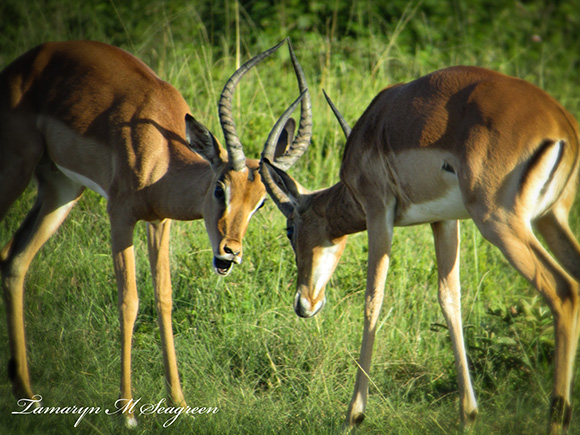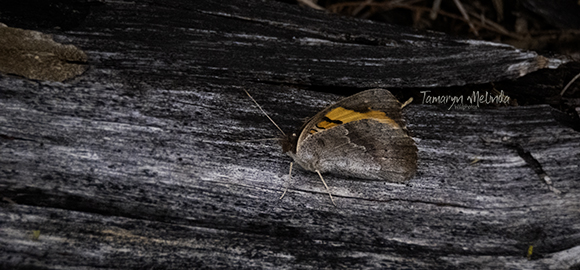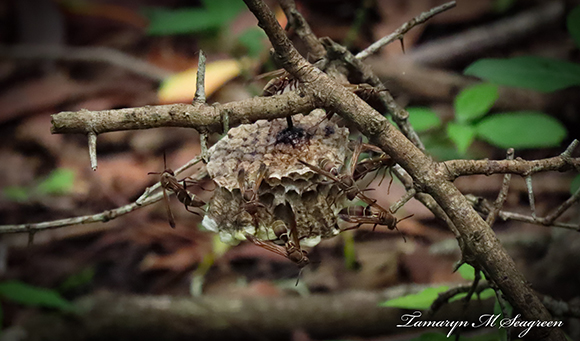4 September 2020
Now you see me… Now you don’t!

Hi everyone! Welcome back to my blog.
When you are out on a safari, it can be exceedingly difficult to spot certain animals as they are particularly good at hiding. They have adapted over the years to have specialised colouring and camouflage to help them hide from threats and predators.
There are three specific things you can look out for whilst out on safari that will help you find animals: Shape, Colour and Movement.
You need to look for any “odd” or “out-of-place” shape in the bush and on the open plains – the rounded shape of a Nyalas rump amongst a cluster of sharp edged leaves; the pointed horns of a male Impala that breaks the smooth outline of the horizon – there are so many shapes that may not belong in certain settings, and these shapes could be hiding animals.
BUT, what do you do when an animal has adapted in such a way that looking for a shape is just not an option? This is when you look out for an “odd” colour. Many animals will almost match the colour of the environment in which they are hiding, making it exceptionally difficult to notice a colour change, but it is there, and if you pay enough attention it will become relatively easy to notice and point out.

Now you see me 
Now you don’t!
However, even when you think you have mastered the art of spotting hidden animals, there will still be some that are just impossible to see. This is where movement comes into play. Some animals are able to sit and hide, completely dead-still for what seems like forever and just when you feel like giving up – thinking your guide is perhaps slightly insane, pointing something out that’s clearly not there – you notice the flick of an ear! That tiny, quick movement just gave away the animal’s position and you are left dumbfounded as to how well it can hide.
This often happens with Mountain Reedbuck (Redunca fulvorufula). These beautiful antelope never cease to impress me with their hiding abilities. Not only do they blend in with the colour of the grass around them, they are masters of sitting dead-still, flattening their ears to lower the risk of you spotting them until eventually they twitch from an irritating fly or the tickle of a grass blade.

Flattening ears 
Laying Dead-still
Various forms of camouflage and mimicry have evolved, with each adaptation specifically suited to the needs of the individual animal species.
Over the years, most animals have taken on the colour of the environment in which they live, usually the colour of the soil or vegetation of the area. This form of camouflage is referred to as Concealing colouration.
Lions have all but mastered this form of camouflage making it incredibly difficult for prey animals to spot them, especially as most prey animals see only in shades of grey. To demonstrate how well camouflaged lions are to prey animals I have taken a couple of my lion photographs and converted them to black and white – this will give you an idea of what a prey animal sees when they look at a lion.
I have also posted the colour versions of these photographs for a comparison to the black and white (through a prey’s eyes) and also to show how well lions blend into the environment even in full colour however, they have different reasons for needing this ability.
Lions see in colour, their eyesight is in fact incredible, and although they don’t see in as much colour as we as humans do – seeing mostly in blues and greens – their night-vision is impeccable. This is where their camouflage becomes essentially effective in that it allows them to stay hidden from rival predators.
Like concealing colouration, Countershading is also quite common in the animal kingdom. Impala may be one of the best examples of this form of camouflage. This is where the back of the animal is darker than the belly of the animal. Impala have a reddish-brown back, lighter brown sides and a white belly. From a terrestrial predator’s point of view the countershading takes away the three-dimensional view of the animal, making it appear two-dimensional and therefore more difficult to spot and attack.
This type of camouflage is useful especially for animals residing in trees or in the ocean, blending into the light environment when viewed from below and blending into the dark environment when viewed from above.

One of the most interesting forms of camouflage to me is Disruptive Colouration. This is where animals have made use of spots, stripes, and various other patterns to break the shape of their body outline in such a way that they look like they are part of the background environment rendering them virtually invisible.
Zebra may look as if they have completely lost the plot when it comes to staying hidden in the African bush, however, their use of disruptive colouration works exceedingly well in their favour. Predators rely on picking out one individual to hunt, and when a herd of zebra are standing together, or running away together as a unit, it’s almost impossible for the predator to single out one specific zebra to attack, so they need to break up the herd to single out their prey.
Animals like Kudu, Nyala and Bushbuck make use of their disruptive colouration to hide more effectively in their environment, making use of stripes and spots to simulate the effect of the dappled shade.

Bushbuck 
You can’t see me! 
Nyala Bull 
Nyala Ewe 
Some animals make use of Disguise as a highly effective form of camouflage. This is most seen in various insect species where they will disguise themselves to look almost exactly like a leaf, or a piece of bark for example. This makes it nearly impossible to spot them unless they move.

Butterfly disguised as bark 
Butterfly disguised as a leaf 

This form of camouflage is similar to Mimicry however, mimicry is when a harmless animal will look like a highly dangerous or venomous animal to avoid being preyed upon. A well-known example of this is where a Common Diadem butterfly looks almost exactly like the poisonous African Monarch butterfly to avoid being eaten by predators.

Nature never ceases to amaze me.
I will always be amazed at how animals adapt for survival, how over the years they evolve in order to hide more effectively or to hunt more efficiently. Nature never stops, it continually changes and improves. Survival of the fittest.
Thank you everyone for reading another one of my blogs! Please feel free to ask any questions you may have and please feel free to give requests for future blogs.
Remember to stay safe.
Warm regards
Ranger Tammy


















Excellent Tams and very informative.
Fascinating animal and a real challenge to a veterinarian to anaesthetise. Collapse of the valves stops supply of blood to the brain and death. Once down the animal has to be given the reversal drug in few minutes to prevent the cardio respiratory collapse. Enjoy the lovely rain regards
Excellent and informative
You must have had a spectacular view of all those animals after the rain…I will have to find someone to take me there when in East London. Enjoyed reading your post.
Great pics Tammy.
Will be there soon.
Regards
Gabriel
Another informative and excellent blog.
I just want to mention I am just all new to blogs and certainly loved your page. Almost certainly I’m likely to bookmark your blog . You surely come with wonderful posts. Thanks a lot for sharing your web-site.
I simply want to say I am beginner to blogging and site-building and seriously loved you’re web site. Very likely I’m likely to bookmark your blog . You absolutely come with tremendous articles and reviews. Appreciate it for revealing your webpage.
I simply want to mention I am very new to blogging and seriously liked your web blog. Almost certainly I’m want to bookmark your site . You surely have terrific article content. Regards for revealing your web page.
I just want to mention I am just beginner to blogging and site-building and really savored this website. Probably I’m going to bookmark your website . You surely have very good articles. Thank you for revealing your web page.
I truly appreciate this post. I have been looking all over for this! Thank goodness I found it on Bing. You have made my day! Thank you again!
It’s truly a nice and helpful piece of info. I am satisfied that you just shared this useful information with us. Please keep us up to date like this. Thank you for sharing.
wonderful post, very informative. I wonder why the other specialists of this sector don’t notice this. You must continue your writing. I’m sure, you’ve a great readers’ base already!
Thank you so much for providing individuals with a very remarkable possiblity to read articles and blog posts from this site. It’s usually so lovely and also stuffed with amusement for me and my office mates to visit your blog on the least thrice in one week to study the new secrets you have got. And definitely, I’m just certainly astounded considering the magnificent tactics served by you. Selected 3 points in this posting are absolutely the most suitable I’ve ever had.
I’d should check with you here. Which isn’t one thing I often do! I get pleasure from studying a submit that may make folks think. Additionally, thanks for allowing me to comment!
It’s not my first time to go to see this web page, i am visiting this web site
vrry often and take good facts from here.
Well I certainly liked learning this. This topic acquired through you is extremely efficient for accurate planning.
You are so cool man, the post on your blogs are super great.~~.’”
I am delighted that I detected this weblog, just the right information that I was looking for!
Hey! I loved your article. Keep writing stuff like this. I’ll return to see more articles like this. It was very creative. TTYL!
I am glad to be a visitor of this gross weblog, appreciate it for this rare info!
I like it whenever people come together and share thoughts.Great website, continue the good work!|
I conceive this web site contains some rattling fantastic info for everyone : D.
This website is really a walk-through you discover the details it suited you in regards to this and didn’t know who must. Glimpse here, and you’ll absolutely discover it.
Usually I don’t read post on blogs, but I wish to say that this write-up very forced me to try and do so! Your writing style has been surprised me. Thanks, very nice post.
Solid post! I actually wasn’t aware of this. It’s refreshing to read because I get so annoyed when writers put no thought into their work. It’s obvious that you know what you’re writing about. I shall definitely visit again!
Really Interested site this is.. I really Enjoy a lot reading your Blog.. I will Bookmark your site for more remark.
Have you considered about including some social bookmarking buttons to these blogs. At least for twitter.
Fantastic article! I’ll be back to see your next article! Thank you!
You made some nice points there. I looked on the internet for the subject matter and found most individuals will agree with your site.
Hello! I could have sworn I’ve been to this blog before but after browsing through some of the post I realized it’s new to me. Anyways, I’m definitely happy I found it and I’ll be book-marking and checking back frequently!
This is really fascinating, You are a very professional blogger. I’ve joined your rss feed and sit up for searching for more of your great post. Also, I have shared your site in my social networks!Cleora Pilling
You seem to be very professional in the way you write.::’~*Estella Matchett
I really enjoyed this blog post. You are an excellent writer. I’ll be back to see more! Thanks so much!
This site is great. I’ll return soon to see more. Thanks so much! Have a great day!
I’am amazed